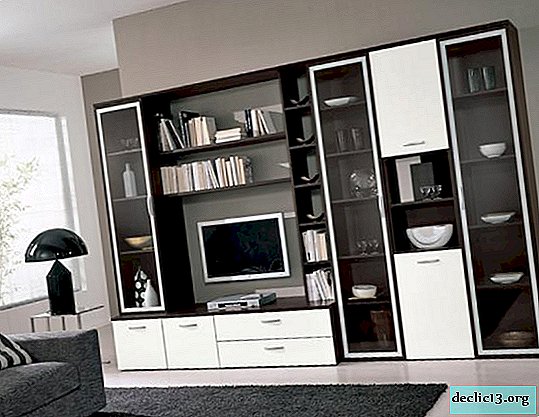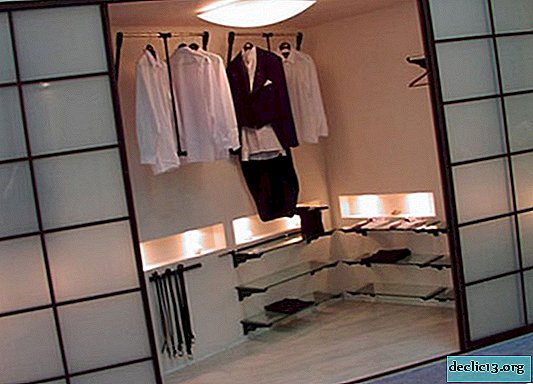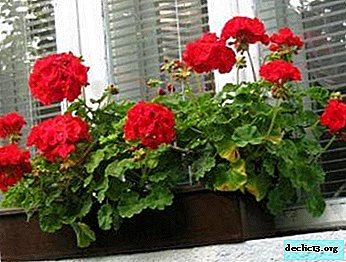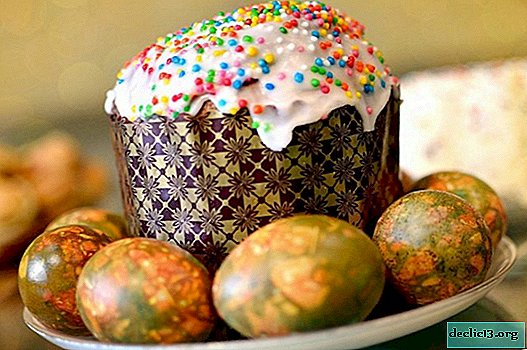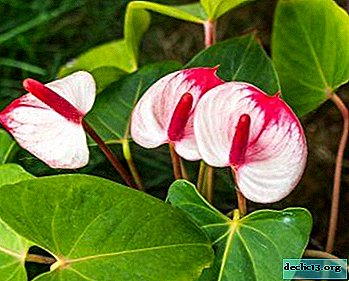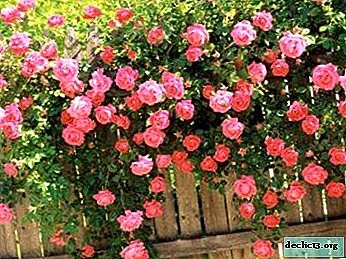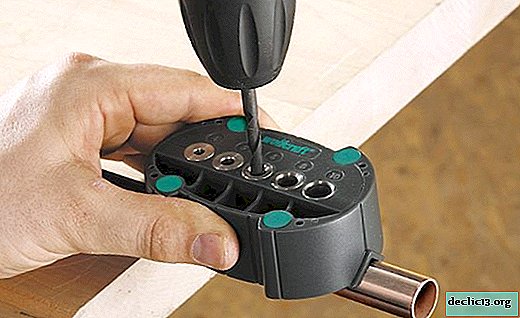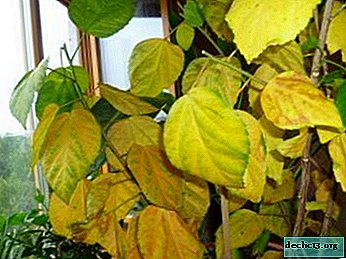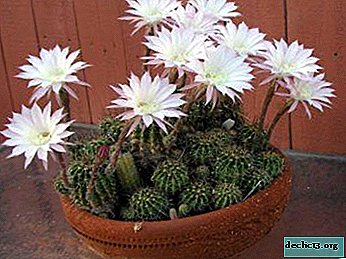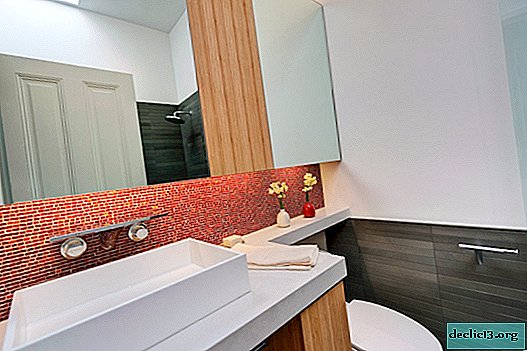Prague Castle - the main symbol of the Czech capital
Prague Castle is a truly unique place, impressive not only in its scale, but also in ancient history. Everyone who came to the Czech Republic should visit here. So we invite you for a sightseeing walk!

General information
Prague Castle, whose territory covers more than 7 hectares, stands in the very center of Prague - on a picturesque cliff above the valley of the Vltava River. It is based on three courtyards, around which are located churches, palaces, basilicas and other medieval buildings. It is no exaggeration to call the Prague Castle not only the main symbol of the Czech capital, but also the largest collection of cultural, architectural and spiritual values. Moreover, in 1962 it was inscribed on the UNESCO list and the Guinness Book of Records as the largest existing castle complex in the world.

Today, the fortress is the representative house of the President of the Czech Republic and one of the most famous sights of the country.
History reference
The history of Prague Castle, founded by Prince Borjivoi Przemyslovich, began in 880. At that time it was an unremarkable fortified settlement surrounded by a moat and high stone mounds. Its first public building was the Church of St. Mary, which was soon joined by cathedrals built in honor of St. Vitus and St. George.

The development of Prague Castle was so active that by the beginning of the 10th century. it becomes the residence of 2 ruling persons of the Czech Republic at once - the king and the bishop of Prague. Here was opened the first monastery in the country, which over time turned into an important cultural and educational institution. The importance of this settlement is also emphasized by the relics of Czech holy benefactors brought to its territory - they have been lying in one of the local churches for hundreds of years.
The heyday of Prague Castle fell during the reign of Charles IV, who strengthened the city fortifications, rebuilt the summer palace and began the construction of the Cathedral. However, the Hussite wars, during which the settlement remained uninhabited, led to the complete decay of its buildings. The situation changed only in 1483, when the king from the Jagiellonian dynasty placed his residence in Grad, completed 3 fortification towers and expanded the area of the main castle.

Each subsequent ruler introduced certain changes into the image of Prague Castle, as a result of which he turned from a simple town into an important cultural and political center of the Czech Empire. So it remains in our time. Today, royal regalia, Christian relics, the remains of Czech rulers, as well as historical and artistic values are stored here.
What to see in the castle complex?
Being one of the most visited places in the Czech Republic, the castle complex is famous not only for its ancient history, but also for a large number of architectural and natural monuments. Learn them will help photos and descriptions of the sights of Prague Castle in Prague.
Royal garden
Acquaintance with the Prague Castle should begin with the Royal Garden, planted in 1534 on the site of old vineyards. The idea of creating this amazingly quiet and peaceful place where you can take a break from the bustle of the city belongs to the Czech ruler Ferdinand I Habsburg. It was he who first bought the abandoned fields from the owners, and then ordered to plant a huge garden in their place, which was loved by the court community.
In addition to rare and exotic plants brought here from distant lands, there are several structures in the garden that at one time served as entertainments for the king and local nobility - the Ballroom, the Lion's yard, the greenhouse, etc. Initially, the garden was designed in The English style, which was later diluted with baroque and renaissance elements.
Old royal palace
Another important attraction of Prague Castle in Prague is the summer residence of the king, who during her existence managed to survive more than a dozen reconstructions. Her story began in the middle of the 12th century. from a small stone building, mortgaged by order of Prince Sobeslav. Nowadays, the remains of this ancient structure can be seen in the basements of a modern castle.
In subsequent years, various ruling families lived in the Royal Palace, each of which remodeled its architecture to its taste. So, in the 13th art. near the eastern wall of the castle was built the chapel of All Saints, and in the first half of the 14th century. he got a few more elements - an arcade located on the north side, a vaulted representative hall, which was used to receive guests, and 2 new buildings erected perpendicular to each other. The next important event in the "life" of this attraction was the emergence of the solemn Vladislav Hall, combining the art of late Gothic with elements of an emerging Renaissance.

After the Habsburg dynasty came to the Czech throne, coronation ceremonies and political meetings began in the Old Royal Castle. At the same time, most of the premises were given over to the archives and offices of officials. At the beginning of Art. 16 new residential buildings began to be erected on the territory of the City, and in the 18th century. he got another and, as it turned out, the last building - Theresian.
Over the next centuries, the building of the summer royal residence was reconstructed several more times. After one of these alterations, which happened in 1993, a museum of fine art was placed in it, and the palace itself was made open to public access.

The St. Vitus Church, which grew up on the site of an ancient rotunda, can be called without exaggeration the most significant religious attraction in Prague. And the point here is not only in ancient architecture and rich interior decoration, but also in the fact that it is in its walls that the remains of the country's most famous historical figures are stored.
The bronze doors of the building are decorated with reliefs depicting scenes from the history of the temple, the choir is surrounded by a crown of Gothic chapels, a mausoleum is located in front of the main altar, and windows with beautiful stained glass windows illuminate the nave.
Want to know the details? It can be done here.
Basilica of St. George
The list of the most important sights of Prague Castle is continued by St. George's Basilica - an architectural structure erected on the site of the Gothic church. In our time, only the foundation laid by Vratislav in 920 remains from it. Like most of the historical buildings in Prague, the basilica underwent several important changes.
At different times, the chapel of St. Ludmila, the entrance portico, the expressive facade in the early Baroque style and the chapel of St. John of Nepomuk were attached to it. The church is "obliged" by its present appearance to the fire that happened in 1142 and destroyed most of its premises. During the restoration work that followed the incident, the basilica was supplemented with a beautiful apse and two high towers, and the interior was given strict Romanesque notes.
In 1969 - 1975 the building underwent another reconstruction, after which some of the premises of the basilica were given to the National Gallery. Nowadays, they hold temporary exhibitions of works of ancient Czech art.
Zlata street
Golden Lane is a collection of small houses built along one of the walls of the summer palace. If in ancient times there was a guard on it, guarding the entrance to the city, now it is one of the most popular attractions of the castle complex. The name of the Golden Lane is associated with a long-standing belief, according to which the royal alchemists worked here, creating various elixirs, gold jewelry and the so-called philosopher's stone for the ruler. About their activities tells the house number 15.
Life in miniature dwellings, the distance between which sometimes did not reach even 2 m, continued until the Second World War. Despite the fact that the Prague authorities carefully watched so that the new buildings did not change the colorful character of the street, ancient architectural elements were not preserved everywhere. In this case, the best example of housing 16 tbsp. it is considered to be house number 13, which belonged to one of the archers of Prague Castle.
Next to it is house number 14, in which the fortuneteller Matilda Prusova lived, about whose incredible abilities it was known not only in the Czech Republic, but also far beyond its borders. The “career” of this fortune-teller ended in an instant - predicting the fall of the Third Reich, she was tortured during interrogation in the Gestapo. A little further is the house number 22, in which from 1916 to 1917 the German writer Franz Kafka lived.Find out RATES or book any accommodation using this form
Dalibork Tower
Among the most interesting sights of the City is Daliborka, a defensive tower that rises at the end of Golden Street and is part of the ancient fortress wall. In 1497, the tower was completely rebuilt and turned into a prison for prisoners of noble origin. Her first prisoner was the warrior Dalibor, who supported peasant rebel groups. It was after his execution that the tower was given its current name.
Daliborka itself is made of white limestone, covered with a low roof and carefully plastered. Her small windows are covered with thick bars. In the immediate vicinity of the tower is the burggrafism (local court) building, with which a narrow gallery connected Daliborka, through which prisoners were taken to prison. Today, the entrance to it is closed with stone slabs.
On the second floor of the tower there is a large room with a stove, three-meter vaults and narrow niches, the heavy doors of which also contained prisoners. On the spiral staircase located in the main chamber, you can get into the underground prison, divided into several chambers. In the lowest of them, called Gladomornaya, the prisoners were lowered on a long and strong cable. People convicted of serious crimes were serving in it. As archaeological excavations have shown, the amenities in this dungeon were limited to a cesspool cut in the floor and three holes in the hatch, providing an influx of fresh air. The prison in Dalibork lasted until 1781, and then was closed.
Rozmberg Palace
Looking at the photos of Prague Castle, you will probably notice another important attraction of this complex. We are talking about the Rozmberg Palace, built by order of the noble Rosenberg family. The building, consisting of 4 wings with arcade galleries, was so liked by Emperor Rudolph that in 1600 he bought it along with a garden and other surrounding territories. It is from this moment that the numerous changes that befell this renaissance structure begin. At first, by order of Rudolph, the palace was not only enlarged by one floor, but also connected to the main residence using a long corridor.
A few years later, the building passed into the possession of Queen Maria Theresa, who decided to make the Institute of Noble Maidens. Then the Rozhmberg Palace not only radically changed its appearance, but also received a new name - it began to be called the Institute of Aristocrats. The first pupils of this institution were 30 noble girls, and the first director was an unmarried Archduke from the Habsburg clan. In addition to the living rooms equipped on the upper floors, there were other rooms here - the chapel room, the living room, the Holy Trinity chapel, the choir room, the abbess’s office, etc.
At the beginning of 20 tbsp. The institute was closed, and the building itself was transferred to the Czech Ministry of Internal Affairs. For tourists, it was inaccessible until the reconstruction of 2007, which returned the Rozmberg Palace to its original style. Now excursions are regularly held here, during which tourists can see the chapel with ancient frescoes, the Rozhmberk Hall and the exhibition exposition describing the life of the former pupils of the Institute.
Changing of the Guard
An overview of the main attractions of Prague Castle is completed by the changing of the guard, which collects a huge number of spectators. The ceremony is held every day from 7 am to 8 pm (in winter - until 6) and does not depend on weather or any other conditions. Despite the fact that the procedure is repeated at intervals of 60 minutes, the greatest attention of the public is attracted by a 12-hour ceremony, accompanied by a professional orchestra.
Practical information
The opening hours of Prague Castle vary depending on the season.
| Winter (from 1.11 to 31.03) | Summer (from 1.04 to 31.10) | ||
|---|---|---|---|
| Complex | From 6 a.m. to 10 p.m. | From 6 a.m. to 10 p.m. | |
| Objects to visit | 9 a.m. to 4 p.m. | 9 a.m. to 5 p.m. |
On a note! For details, go to the official website of the castle complex (there is a Russian version) - www.hrad.cz/ru/prague-castle-for-visitors.
The price of entrance tickets to Prague Castle is influenced by several factors - such as a sightseeing route, the age category of the visitor, etc.
| Route | Standard | Discount * | Family** |
|---|---|---|---|
| "BUT" | 350 | 175 | 700 |
| "AT" | 250 | 125 | 500 |
| "FROM" | 350 | 175 | 700 |
| Art Gallery | 100 | 50 | 200 |
| Historical exposition | 140 | 70 | 280 |
| Lookout tower Church of St. Vitus | 150 | 150 | 150 |
| Exposition Treasury of St. Vitus Church | 250 | 125 | 500 |
| Powder Gate | 70 | 40 | 140 |
Prices are in crowns.
 Art Gallery
Art GalleryDiscount tickets * are entitled to:
- Children 6-16 years old;
- Older people (after 65 years);
- Students up to 26 years old.
A discount for visiting attractions is provided only with a student or passport.
 The observation deck of the Cathedral of St. Vita
The observation deck of the Cathedral of St. VitaA family ticket ** can be visited by 2 adults and 5 children under 16 years of age.
Free admission:
- Children under 6 years old;
- People with disabilities;
- Disabled persons accompanied by 1 person.
On a note! Photographing interiors is not included in the price of a ticket to Prague Castle and is paid for at a separate rate - 50 CZK per camera. At the same time, you can take pictures far from everywhere.
To purchase tickets, you should contact the information centers and ticket offices.
On a note! The ticket cannot be returned!
How to get there
There are several ways to get to Prague Castle. Let's consider each of them.
 Method 1:
Method 1:- Take the tram 22;
- Get to the stop. "Prague Castle";
- Turn left and walk to the fountain located in the 2nd courtyard.
- Take the tram 22;
- Get to the stop. Pogorozhelets;
- Go down to Hradchanskaya Square;
- Go to the Gates Gate leading to the 1st courtyard.
 New castle staircase
New castle staircase- Take the tram 22;
- Get to the stop. "Malostranskaya Square";
- Get to the start of st. Nerudova;
- Go to the street. Zametskaya;
- Pass about 50 m, turn off on the street. Tgunovskaya and you get to the New Castle Stairs. On it you can go first to the Gradchanskaya Square, and then to the Gates of the Giants.
- Take the metro (Green Line A);
- Eat to st. "Malostranska";
- Pass about 100 m along the tram track (route No. 22);
- Turn left to the Old Castle stairs;
- Climb it to the gates of Na Opyši.
 Manege in PragueMethod 5:
Manege in PragueMethod 5:- Take the tram 22;
- Get to the stop. "Summer Royal Palace";
- Follow the path surrounded by greenery to the Manege.
Those who plan to see the sights of the complex on their own will probably need the exact address of Prague Castle: Hradcany, Prague 11908, Czech Republic.
All prices on the page are for May 2019.
Compare accommodation prices using this form
Useful Tips
If you are planning to go to Prague Castle in the Czech Republic, check out a selection of these tips in advance:
- Those who want to enjoy the local beauties in relative solitude, need to come early - at about 8 in the morning. But in this case, peace will not last more than an hour - by 09:00 the courtyards and streets of Grad will be filled with visitors;
- Walking around the complex is best done with a guide or audio guide;
- To enjoy the view of the surroundings of Prague, go up to the observation deck located on the Town Hall;
- If you do not intend to overpay for souvenirs, do not buy them on Zolotaya Street - it has the most expensive outlets in Prague;
- In order not to pay for admission to Golden Lane, come here after 16:00 - in winter and after 17:00 - in summer;
- When visiting cathedrals, do not forget about the dress code: clothing should cover not only legs but also shoulders;
- Those with an iPhone are encouraged to download the free Travelry app. It works without access to the Internet and allows not only to plan a tourist route, but also to learn a lot of interesting things about the main attractions of Prague;
- To take the best places at the solemn changing of the guard, you need to arrive early - at least half an hour before the ceremony.
 Zlata street in Prague
Zlata street in PragueVisiting Prague Castle, you will get a lot of unforgettable impressions. Enjoy your walk!
Walking at night at Prague Castle:

